These products constitute a specific category of recreational and fitness equipment designed for male users. They feature a configuration of wheels aligned in a single line, attached to a supportive boot, offering a smooth rolling experience on paved surfaces. As an example, the design and construction of these skates are tailored to the anatomical needs of the male foot, providing enhanced comfort and performance.
The significance of this equipment lies in its ability to provide a low-impact cardiovascular workout, improve balance and coordination, and offer an enjoyable outdoor activity. Historically, these skates have evolved significantly in terms of materials, construction, and performance features, reflecting advancements in sports engineering and consumer demand for improved comfort and efficiency.
The subsequent sections of this article will delve into various aspects, including product features, maintenance guidelines, considerations for selecting the appropriate model, and safety precautions.
Selection and Maintenance Tips
Proper selection and consistent maintenance are crucial to optimize performance and extend the lifespan of these skates. Attention to detail in these areas can significantly enhance the skating experience and ensure user safety.
Tip 1: Size and Fit Verification: Ensure accurate sizing by consulting the manufacturer’s sizing chart and, ideally, trying the skates on with appropriate athletic socks. Proper fit minimizes discomfort and maximizes control.
Tip 2: Wheel Hardness Assessment: Evaluate wheel durometer (hardness) based on intended skating surfaces. Softer wheels offer better grip on rough surfaces, while harder wheels provide greater speed and durability on smooth surfaces.
Tip 3: Bearing Maintenance Protocol: Regularly clean and lubricate wheel bearings to maintain optimal rolling efficiency. Accumulation of dirt and debris can impede performance and necessitate replacement.
Tip 4: Frame Alignment Confirmation: Periodically inspect frame alignment to ensure proper tracking and prevent uneven wear. Misalignment can impact stability and maneuverability.
Tip 5: Brake Pad Inspection and Replacement: Monitor brake pad wear and replace as needed to maintain reliable stopping power. Worn brake pads compromise safety and control.
Tip 6: Cuff and Closure System Adjustment: Adjust the cuff and closure system to provide a secure and comfortable fit without restricting circulation. Proper support is essential for stability and injury prevention.
Tip 7: Regular Cleaning Regimen: Clean the skates regularly with a damp cloth to remove dirt and grime. This practice helps preserve the materials and maintain their aesthetic appearance.
Adhering to these tips can help ensure a safer, more enjoyable, and longer-lasting skating experience. Careful attention to detail in selection and maintenance is a worthwhile investment.
The following section will address potential issues and troubleshooting techniques associated with these skates.
1. Anatomical Boot Design
The anatomical boot design constitutes a critical element in the construction of inline skates intended for male users. It directly impacts comfort, performance, and injury prevention. A properly designed boot accommodates the specific contours and biomechanics of the male foot, optimizing power transfer and reducing strain.
- Support and Stability
The anatomical design provides tailored support to the ankle and arch, crucial for maintaining stability during skating maneuvers. This support minimizes pronation and supination, reducing the risk of ankle sprains. Examples include reinforced ankle cuffs and strategically placed padding to cradle the foot.
- Customized Fit
Anatomical boots often incorporate heat-moldable materials or customizable liners that conform to the individual foot shape. This individualized fit eliminates pressure points and hot spots, enhancing comfort during extended use. The precise fit also improves control and responsiveness.
- Power Transfer Efficiency
A well-designed anatomical boot maximizes power transfer from the foot to the frame and wheels. By minimizing slippage and providing a snug fit, energy is more efficiently directed into forward motion. This results in improved speed and reduced fatigue.
- Ventilation and Moisture Management
Anatomical boots typically feature strategically placed ventilation ports and moisture-wicking liners. These elements promote airflow and reduce sweat accumulation, maintaining a comfortable and dry environment inside the boot. This helps prevent blisters and other foot ailments.
The anatomical boot design is an integral component in determining the overall quality and performance of inline skates for men. A focus on anatomical accuracy translates to improved comfort, enhanced control, and reduced risk of injury, ultimately contributing to a more enjoyable and effective skating experience. The integration of these design principles demonstrates a commitment to meeting the specific needs of the male skater.
2. Frame Material Composition
The frame material composition is a fundamental determinant of performance characteristics in inline skates, directly influencing weight, stiffness, and durability. For inline skates marketed towards men, the selection of frame materials represents a crucial engineering decision balancing these factors to meet the demands of typical usage scenarios.
- Aluminum Alloy Strength and Weight
Aluminum alloys are commonly employed due to their high strength-to-weight ratio. Specific alloys, such as 6061 or 7005 series aluminum, offer varying degrees of tensile strength and corrosion resistance. Heavier individuals or those engaging in aggressive skating styles benefit from frames constructed with higher-grade alloys that resist bending or deformation under load. The reduced weight of aluminum frames enhances agility and reduces fatigue during extended use.
- Carbon Fiber Composites for Performance
Carbon fiber composites offer superior stiffness and vibration damping compared to aluminum, resulting in more efficient power transfer and a smoother ride. However, carbon fiber frames are typically more expensive and can be more susceptible to damage from impacts. The selection of carbon fiber is often reserved for high-performance models targeted at experienced skaters who prioritize responsiveness and speed.
- Plastic Composites: Cost and Durability
Plastic composites, such as reinforced nylon, provide a cost-effective alternative to metal frames. While plastic frames are generally less stiff and durable than aluminum or carbon fiber, they can be suitable for recreational skating or beginner models. The impact resistance of certain plastic composites can be advantageous in preventing damage from falls or collisions.
- Hybrid Constructions Balancing Attributes
Some frames employ a hybrid construction, combining different materials to optimize specific performance characteristics. For instance, a frame might feature an aluminum core for stiffness and carbon fiber reinforcement for vibration damping. This approach allows manufacturers to tailor the frame’s properties to meet the specific needs of the target user.
The choice of frame material composition is a critical factor in the overall design and performance of inline skates. Each material offers a distinct set of advantages and disadvantages, influencing the skate’s weight, stiffness, durability, and cost. Manufacturers carefully consider these factors when selecting frame materials for inline skates, striving to deliver the optimal balance of performance and value for the intended application and the specific needs of the male skater.
3. Wheel Durometer Rating
Wheel durometer rating, measured on the A scale, significantly impacts the performance and suitability of inline skates. For inline skates designed for men, this rating directly affects grip, speed, and wear resistance, influencing the overall skating experience. A lower durometer rating (e.g., 78A-82A) indicates a softer wheel, providing increased grip and shock absorption. These wheels are more appropriate for outdoor surfaces with imperfections, enhancing comfort and control. Conversely, a higher durometer rating (e.g., 84A-90A) signifies a harder wheel, offering greater speed and durability on smoother surfaces, such as indoor rinks or well-maintained paths. The skater’s weight, skating style, and typical skating environment should inform the selection of an appropriate durometer rating. For example, a heavier male skater primarily using skates for fitness on paved trails would benefit from a wheel with a durometer rating in the mid-80s to balance grip and wear resistance.
The relationship between wheel durometer rating and the performance of inline skates is not linear. While harder wheels offer increased speed due to lower rolling resistance, they also transmit more vibrations to the skater, potentially leading to fatigue over extended periods. Softer wheels, although providing better grip and shock absorption, wear down more quickly, necessitating more frequent replacements. Real-world examples illustrate this trade-off: aggressive skaters often use harder wheels for faster grinds and slides, accepting the trade-off in comfort, while recreational skaters prioritize softer wheels for a smoother, more enjoyable experience on varied terrains. The design of the inline skate itself, including the frame material and boot construction, can also influence the perceived effect of wheel durometer, underscoring the importance of considering the entire skate system when making wheel selection decisions.
In summary, wheel durometer rating is a crucial specification influencing the overall performance and suitability of inline skates. Understanding the trade-offs between grip, speed, wear resistance, and comfort is essential for selecting wheels that align with the intended use and the skater’s preferences. While generalizations can be made regarding durometer recommendations, individual experimentation and adjustments are often necessary to optimize performance and comfort based on specific conditions and personal skating style. Challenges remain in developing universally adaptable wheels that can perform optimally across a wide range of surfaces and skating disciplines.
4. Bearing Precision Grade
Bearing precision grade, typically denoted by the Annular Bearing Engineering Committee (ABEC) scale or its ISO equivalent, is a critical factor affecting the performance characteristics of inline skates designed for men. This grading system, ranging from ABEC 1 to ABEC 9 (with higher numbers indicating tighter tolerances), quantifies the manufacturing precision of the bearing’s internal components. In inline skates, bearing precision directly influences rolling resistance, speed, and durability. Higher precision bearings reduce friction, allowing for greater speed and smoother gliding. The effect of bearing precision is magnified by the user’s weight and skating style; heavier users or those engaged in aggressive skating will experience a more pronounced difference in performance between lower and higher grade bearings. As an example, a recreational skater may find ABEC 3 or 5 bearings adequate for casual use, while a competitive skater may require ABEC 7 or 9 bearings to maximize speed and efficiency.
The practical significance of understanding bearing precision grade lies in its impact on skating efficiency and maintenance requirements. Lower precision bearings, while more affordable, often exhibit greater internal friction and are more susceptible to wear and contamination, necessitating more frequent cleaning and lubrication. Higher precision bearings, though requiring a larger initial investment, typically offer extended service life and reduced maintenance needs due to their tighter tolerances and smoother operation. Furthermore, the compatibility of bearings with different wheel types and frame designs must be considered. Mismatched components can negate the benefits of high-precision bearings or even accelerate wear. For example, using high-precision bearings with worn or improperly aligned wheels will not result in optimal performance. The selection of bearing precision grade, therefore, should be a holistic decision based on skating style, intended use, and budget.
In conclusion, bearing precision grade is an important specification directly impacting the performance, durability, and maintenance requirements of inline skates. While higher precision bearings offer advantages in speed and efficiency, their benefits must be weighed against cost and compatibility with other skate components. A balanced approach, considering individual skating needs and budget constraints, is essential for selecting the appropriate bearing precision grade. Future developments in bearing materials and manufacturing techniques may further enhance performance and durability, addressing challenges related to friction and contamination.
5. Closure System Security
Closure system security, in the context of inline skates designed for male users, refers to the reliability and effectiveness of the mechanisms used to secure the skate to the foot. This is a crucial component because it directly impacts stability, control, and injury prevention. An insecure closure system can lead to slippage, compromised ankle support, and an increased risk of falls. For instance, a buckle that frequently unfastens during use necessitates constant readjustment, diverting attention from skating and potentially leading to hazardous situations. Conversely, a robust and reliable closure system maintains a snug and secure fit, enhancing the skater’s ability to execute maneuvers with precision and confidence. This is especially critical for more experienced skaters performing complex tricks or reaching higher speeds.
The practical significance of a secure closure system extends beyond performance. It influences user comfort and reduces the likelihood of overuse injuries. A well-designed closure system distributes pressure evenly across the foot, minimizing hot spots and preventing chafing. Furthermore, it ensures that the ankle joint receives adequate support, reducing strain on tendons and ligaments. For example, a combination of laces, buckles, and power straps, common in many high-end inline skates, allows for a customized fit that caters to the individual foot shape and skating style. Such a system allows the skater to fine-tune the level of support and tightness, optimizing both comfort and control. The absence of such security measures can lead to discomfort, blisters, and even more serious injuries like ankle sprains.
In summary, closure system security represents a vital aspect of inline skate design for men, directly affecting performance, safety, and comfort. It requires a careful balance between adjustability, reliability, and durability. Challenges remain in developing closure systems that can accommodate a wide range of foot shapes and sizes while maintaining consistent security under varying conditions. As technology advances, improvements in materials and designs will likely lead to even more secure and comfortable inline skating experiences. This aspect links directly to the broader theme of optimizing skate design to enhance user performance and safety.
6. Brake Pad Durability
Brake pad durability is a critical safety factor in inline skates, particularly in models designed for men due to their generally higher weight and potentially more aggressive skating styles. In the context of ‘inline skates k2 men,’ the quality and wear-resistance of brake pads directly impact stopping power and control. Inferior brake pads that degrade rapidly necessitate frequent replacements, leading to increased maintenance costs and potentially compromising safety if not addressed promptly. For example, K2 inline skates marketed towards men for fitness or recreational use require durable brake pads capable of withstanding the friction generated during repeated stops, particularly on varied terrain. The composition of the brake pad material, its surface area, and the design of the braking mechanism all contribute to its overall durability and effectiveness.
The practical significance of understanding brake pad durability lies in mitigating the risk of accidents and injuries. Durable brake pads maintain consistent stopping power over extended periods, reducing the distance required to come to a complete stop. This is crucial in urban environments or crowded skating areas where sudden stops may be necessary to avoid collisions. Furthermore, brake pad material composition influences its performance under different weather conditions. Some materials may lose effectiveness in wet or icy conditions, highlighting the importance of selecting appropriate brake pads based on the intended skating environment. Real-world testing and user reviews often provide valuable insights into the longevity and reliability of different brake pad options available for ‘inline skates k2 men’.
In summary, brake pad durability is an essential attribute contributing to the safety and performance of inline skates. Selecting ‘inline skates k2 men’ equipped with high-quality, durable brake pads is paramount for ensuring reliable stopping power and minimizing the risk of accidents. Challenges remain in developing brake pad materials that offer both exceptional durability and consistent performance across a wide range of environmental conditions. Addressing this challenge is crucial for enhancing the overall safety and user experience of inline skates. This feature links directly to safety, ensuring reliability, and the quality of inline skates, which is very vital to consumers.
7. Ventilation Efficiency
Ventilation efficiency is a critical design parameter in inline skates, particularly for models marketed towards men, impacting comfort, performance, and hygiene. Adequate ventilation reduces heat and moisture buildup within the boot, enhancing the overall skating experience and mitigating potential discomfort or health concerns.
- Material Permeability and Airflow Channels
Ventilation efficiency is directly influenced by the permeability of the boot materials and the presence of dedicated airflow channels. Breathable materials, such as engineered mesh or perforated synthetics, facilitate the exchange of air between the interior and exterior of the skate. Strategically placed vents, often located in the toe, side, and heel areas, create airflow channels that promote convection and evaporative cooling. For example, K2 inline skates designed for fitness incorporate mesh panels and adjustable vents to optimize airflow during prolonged use. The effectiveness of these features is dependent on their size, location, and the overall design of the boot structure.
- Liner Construction and Moisture-Wicking Properties
The liner material plays a crucial role in moisture management and, consequently, ventilation efficiency. Liners constructed from moisture-wicking fabrics, such as Coolmax or similar synthetic blends, draw sweat away from the skin, promoting evaporation and reducing humidity within the boot. This contributes to a more comfortable and hygienic environment. Furthermore, liner design elements, such as perforated foam padding or integrated ventilation channels, enhance airflow and further reduce moisture buildup. Inadequate liner construction can negate the benefits of other ventilation features, leading to discomfort and potential skin irritation.
- Impact on Performance and Endurance
Effective ventilation contributes to improved performance and endurance by minimizing the negative effects of overheating and excessive perspiration. Reduced heat buildup prevents fatigue and allows skaters to maintain optimal performance levels for longer durations. Furthermore, dry feet are less prone to blisters and other discomforts, enabling skaters to focus on their technique and enjoy their activity. In contrast, poorly ventilated skates can lead to overheating, reduced performance, and an increased risk of injury. Consider a long-distance skater who relies on well-ventilated skates to avoid discomfort and maintain peak performance levels during extended training sessions.
- Hygiene and Odor Control
Ventilation efficiency also plays a significant role in maintaining hygiene and controlling odor within the skates. Adequate airflow helps to prevent the growth of bacteria and fungi, which thrive in warm, moist environments. By promoting evaporation and reducing humidity, ventilation minimizes the accumulation of sweat and other organic matter, reducing the likelihood of unpleasant odors. Furthermore, some inline skates incorporate antimicrobial treatments in their liners and footbeds to further inhibit bacterial growth and maintain a fresh, hygienic environment. Neglecting ventilation can lead to persistent odors and an increased risk of foot infections.
In summary, ventilation efficiency is a multi-faceted design consideration in ‘inline skates k2 men’ impacting comfort, performance, hygiene, and overall user experience. The integration of breathable materials, airflow channels, moisture-wicking liners, and antimicrobial treatments contributes to a well-ventilated skate that minimizes heat and moisture buildup, promotes a comfortable and hygienic environment, and enhances skating performance. Ongoing research and development efforts continue to focus on improving ventilation technologies to address the challenges of heat and moisture management in inline skates. The design for ventilation efficiency, is a very vital to consumers to improve performance and comfortable.
Frequently Asked Questions
This section addresses common inquiries regarding the selection, maintenance, and usage of inline skates designed for male users, with a specific focus on K2 models. The information provided aims to offer clarity and guidance to ensure optimal performance and longevity of the equipment.
Question 1: What distinguishes ‘inline skates K2 men’ from unisex or women’s models?
The ‘inline skates K2 men’ typically feature a wider footbed and higher ankle support, accommodating the anatomical differences of the male foot. Additionally, the frame and wheel configurations may be optimized for a higher center of gravity and greater force exertion. The styling often incorporates masculine design elements.
Question 2: How does one determine the correct size when purchasing ‘inline skates K2 men’ online?
Consult the manufacturer’s sizing chart, which provides measurements in inches or centimeters corresponding to standard shoe sizes. Measure the foot length accurately, wearing socks of similar thickness to those used while skating. Compare the measurement to the chart and consider ordering a half-size up if between sizes. Checking user reviews for fit feedback can also be beneficial.
Question 3: What is the recommended maintenance schedule for ‘inline skates K2 men’ used regularly?
After each use, clean the wheels and bearings to remove debris. Inspect the frame, boot, and closure system for damage. Every 20-30 hours of use, clean and lubricate the bearings. Replace worn brake pads promptly. Rotate the wheels periodically to ensure even wear. Store the skates in a dry, well-ventilated location.
Question 4: What are the key safety precautions to observe when using ‘inline skates K2 men’?
Always wear appropriate protective gear, including a helmet, wrist guards, elbow pads, and knee pads. Skate in designated areas away from traffic. Avoid skating on wet or uneven surfaces. Learn and practice basic skating skills, including stopping techniques, before attempting more advanced maneuvers. Be aware of surroundings and other skaters.
Question 5: What is the typical lifespan of ‘inline skates K2 men,’ and what factors influence it?
The lifespan varies depending on usage frequency, skating style, and maintenance practices. High-quality ‘inline skates K2 men’, with proper care, can last for several years. Factors such as aggressive skating, exposure to harsh weather conditions, and neglect of maintenance can significantly reduce their lifespan. Wheels and bearings are the most frequently replaced components.
Question 6: Are replacement parts readily available for ‘inline skates K2 men,’ and where can they be sourced?
Replacement wheels, bearings, brake pads, and closure system components are generally available from authorized K2 retailers, online marketplaces, and specialty sporting goods stores. Ensure compatibility by referencing the skate model number and component specifications. Generic parts may be suitable, but performance and durability may vary.
This FAQ provides a concise overview of essential information related to ‘inline skates K2 men.’ Adhering to the guidelines presented can contribute to a safer and more enjoyable skating experience.
The following section will offer advice to consumers to choosing the correct inline skates.
Conclusion
The preceding exploration of ‘inline skates K2 men’ underscores the importance of informed decision-making in the selection and maintenance of this specific type of sporting equipment. Key factors, encompassing anatomical design, material composition, and component durability, have been presented to facilitate a comprehensive understanding of the product’s attributes and limitations. Proper consideration of these elements directly impacts performance, safety, and overall user satisfaction.
Ultimately, responsible ownership of ‘inline skates K2 men’ necessitates adherence to recommended maintenance protocols, diligent observation of safety guidelines, and a proactive approach to component replacement. Prioritizing these measures ensures both the longevity of the equipment and the well-being of the user. Further research and continuous evaluation of technological advancements in skate design are encouraged to remain informed and enhance the skating experience.


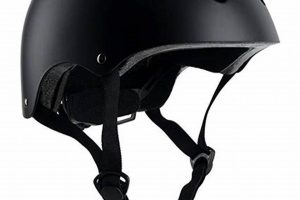
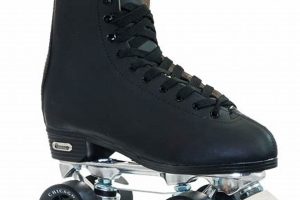
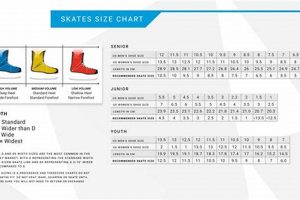
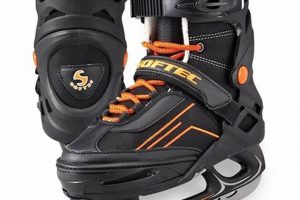
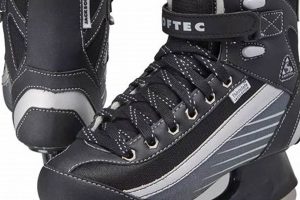
![Best Men's Ice Skates for Beginners: [Gear Guide] Safem Fabrication - Precision Engineering & Custom Manufacturing Solutions Best Men's Ice Skates for Beginners: [Gear Guide] | Safem Fabrication - Precision Engineering & Custom Manufacturing Solutions](https://cruzskateshop.com/wp-content/uploads/2025/06/th-3269-300x200.jpg)